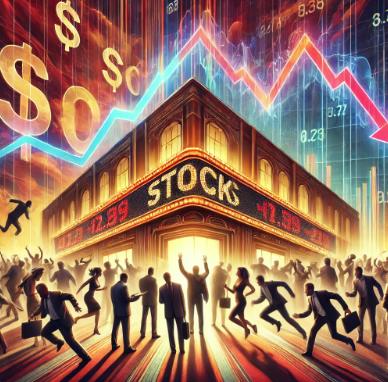
Retail investors and asset managers alike are diving headfirst into the stock market, convinced that the good times will keep rolling. Optimism is at euphoric levels, with record-breaking signs of overconfidence spreading across every corner of the financial system. But history tells a sobering story—these moments of unchecked exuberance often precede devastating downturns. The warning signs are clear, and ignoring them could lead to catastrophic consequences. Here’s what you need to know.
‼️ASSET MANAGERS ARE ALL IN ON US STOCKS‼️
Asset managers net positioning hit near a RECORD 98% meaning they are almost fully invested.
Such extremes have only been seen a couple of times before.
US stock market optimism is through the roof.
What is going to happen next? pic.twitter.com/UVsuzk73ut
— Global Markets Investor (@GlobalMktObserv) December 1, 2024
Asset managers’ net positioning in US stocks has reached a staggering 98%, a level of bullishness that screams danger. Such extremes have been seen only a handful of times in history, and every instance was followed by a market reckoning. The blind optimism fueling this frenzy is a glaring warning of what lies ahead.
This year’s Black Friday spending revealed a grim reality: Americans are financing basic necessities like food and toilet paper. The days of splurging on luxury items are over, replaced by desperation to cover essentials. When consumer spending reaches this point, the cracks in the economy are undeniable.
Turns out Black Friday "splurges" are buying food and toilet paper. And most are financing it.
2 more months of the Bidenomics miracle. https://t.co/cDrchh23G1
— Peter St Onge, Ph.D. (@profstonge) December 1, 2024
It’s almost time to pop.$PLTR is the biggest bubble in stock market history.
With a market cap of over $153 billion and has earnings of only $476 million per year puts it at a 321% P/S ratio.
Once $PLTR hits the $70 resistance we will likely see a pullback to $38.
Be ready. pic.twitter.com/v1xmfu8FOU
— Mike Investing (@MrMikeInvesting) December 1, 2024
Student loan debt climbed by $21 billion in Q3 2024, reaching a record $1.61 trillion. Over the past 15 years, this debt has grown 230%, suffocating borrowers and eroding economic mobility. Average balances in some states now exceed $40,000, an unpayable burden for millions.
Office-backed commercial mortgage-backed securities delinquencies have surged to 10.7%, the highest in 11 years. Even during the Great Financial Crisis, office CMBS didn’t collapse this rapidly. The commercial real estate market is unraveling faster than regulators can respond, signaling deeper systemic risks.
More than 80% of Americans believe it’s a terrible time to buy a house, the highest negativity on record. With mortgage rates near 7% and home prices at all-time highs, affordability is dead. The housing bubble has officially burst, and the fallout is just beginning.
Corporate bankruptcies are rising sharply, despite interest rates still being below historic highs. Many companies face the impossible task of refinancing their debts at even higher rates as they come due. The resulting cascade of defaults will hammer the economy.
Leveraged ETFs have reached all-time highs, driven overwhelmingly by bullish bets. This concentration of risk amplifies the potential for catastrophic losses. A single downturn could trigger a mass exodus, deepening the decline in an already fragile market.
If we were able to document euphoria in a single chart, this could be one of them.
Leveraged ETF exposure is at all-time highs, and the vast majority of that exposure is within leveraged long exposure.
This amplifies tail risks if we see a meaningful drawdown as many would sell pic.twitter.com/DdYWWxkj4C
— Markets & Mayhem (@Mayhem4Markets) November 30, 2024
The top 10 US companies now account for nearly 35% of the S&P 500’s value. This level of concentration is a ticking time bomb. If even one falters, the ripple effect could decimate the entire index, leaving investors reeling.
US home sales are on track for their worst year since 1995. Houses in previously hot markets like Florida, Georgia, and Texas are sitting unsold for weeks. The demand that once drove prices sky-high has vanished, leaving a glut of overpriced homes.
Every sign points to a market on the brink. Leveraged speculation, mounting debt, housing and commercial real estate crises, and misplaced euphoria create a perfect storm. The parallels to past crashes are undeniable, and the outcome will be just as devastating. When the dust settles, this time won’t be different—it will be worse.
1,152 views